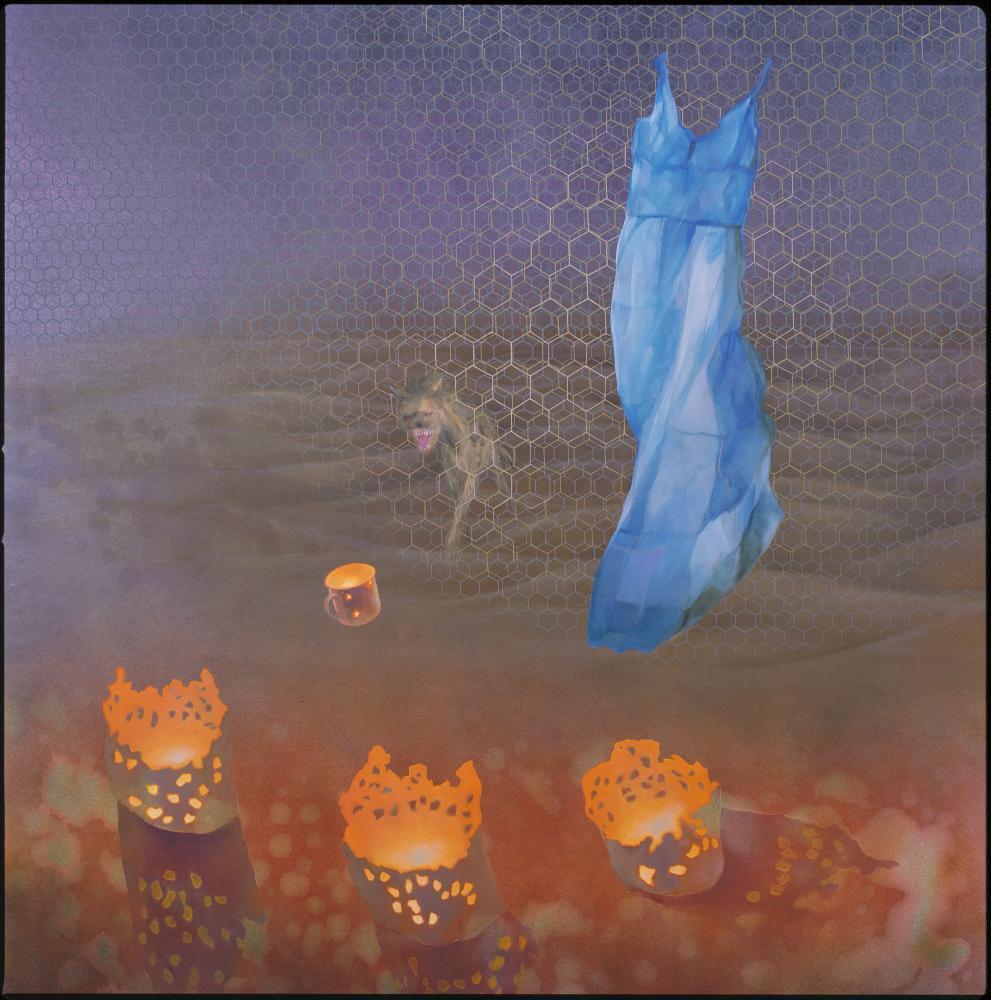The Man Who Sang and the Woman Who Kept Silent
| CCAC #: | 0161b |
| Artwork title: | The Man Who Sang and the Woman Who Kept Silent |
| Artist(s): |
Judith Mason |
| Year made: | 1998 |
| Artwork type: | Painting |
| Medium: | Oil on canvas |
| Dimensions (mm): | 1902 x 1600 |
| Framed dimensions (in mm): | 1970 x 1675 x 45 |
| Artwork multipart work: |
The Man Who Sang and the Woman Who Kept Silent |
| Source: | Donated by Nancy Gordon, Justice Sachs and the artist |
| Year acquired: | 1998 |
| Installation type: | Movable artwork |
| Current location: | On public display |
| Exhibitions: |
A LUTA CONTINUA: Reflecting on 30 years of democracy through the CCAC - National Arts Festival, Makhanda - 20 to 30 June 2024 A LUTA CONTINUA: Reflecting on 30 years of democracy through the CCAC - William Humphreys Art Gallery, Kimberley - 1 August to 7 September 2024 A LUTA CONTINUA: Reflecting on 30 years of democracy through the CCAC - KZNSA Gallery, Durban - 27 September - 10 November 2024 |
| Signage: | The “Blue Dress”, one of the signature works of the Constitutional Court Art Collection, relates to the telling of stories of trauma, but also to the search for, and meaning of, truth. The executions of two anti-apartheid movement cadres by the security police, Harold Sefola and Phila Ndwandwe, as described at the Truth and Reconciliation Commission (TRC), inspired the artist to make this artwork. Harold Sefola was electrocuted with two comrades in a field outside Witbank. As a dying wish he requested to sing ‘Nkosi Sikelel’ iAfrika’, now part of the national anthem of South Africa. His killer said: “He was a very brave man who believed strongly in what he was doing.” The braziers in the one oil painting stands as a representation of Sefola’s flame that was forcefully put out. Phila Ndwandwe, an Umkhonto we Sizwe general, was shot by security police after being apparently kept naked and tortured in an attempt to make her inform on her comrades. It was also believed that she used a plastic bag to cover herself and preserve her dignity. When the artist heard Ndwandwe’s story through a radio newscast, she collected discarded blue plastic bags and sewed them into a dress. On the skirt of the dress she inscribed a poem to Ndwande, writing that plastic bags everywhere are memorials to Ndwandwe’s courage. In 2016, a law clerk at the Constitutional Court, Douglas Ainslie, was so taken by the story of Phila Ndwandwe that he set on a path to uncover the story of her murder as documented in TRC records. He found that there was some reasons to doubt the narrative being told about the artwork, and that there had been testimonies that would make it appear that Ndwandwe was not tortured, kept stripped naked, nor (as the title of Mason’s piece portrays) “the woman who kept silent” by refusing to offer testimony. The artist acknowledged that although the “facts” conveyed at the time of the work’s production have subsequently been called into doubt, the imagery is not meant to be read literally. Instead, the symbolism is open to different interpretations. The hyena in the oil paintings symbolise both the security police but also a psychopomp, a spiritual guide of a person’s soul. The artwork calls upon an emotional reading in order to evoke empathy. Upon production of two additional plastic dresses in 2016 (due to the original having started to disintegrate) the artist added burn marks on one of the new dresses, using a magnifying glass, in order to signify the never-ending task of truth-seeking, as in the work of the Constitutional Court, adding another layer to the artwork. |
| Themes: |
Truth and Reconciliation Commission (TRC) |

Photographer: Gisèle Wulfsohn
Photo copyright: CCT
NOTE: The process of photographing artworks in the CCAC is underway - we are currently working to improve image quality and display on the CMS but have included internal reference photos for identification purposes in the interim.